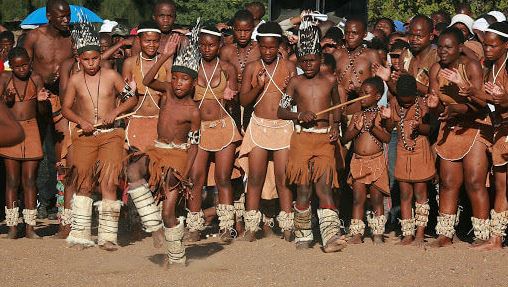The Tswana are a Bantu-speaking ethnic group who are native to Southern Africa. The Tswana language is a member of Sotho-Tswana language group which belongs to the Bantu language family group. Both Northern Sotho and Sesotho derive from the Setswana language and the people speaking these languages are an offshoot of the Tswana people. Batswana are the native people of southwest Botswana, Gauteng, northwest and northern cape provinces of South Africa where the majority of Batswana are located. The Batswana are descended mainly from Bantu-speaking tribes who migrated southward of Africa around 600 AD, living in tribal enclaves as farmers and herders. Several Iron Age cultures flourished from around 900 AD, including the Toutswemogala Hill Iron Age settlement. The Toutswe were based in the eastern region of what is now Botswana, relying on Tswana cattle breed held in kraals as their source of wealth. The arrival of the ancestors of the Tswana-speakers who came to control the region (from the Vaal River to Botswana) has yet to be dated precisely although AD 600 seems to be a consensus estimate. This massive cattle-raising complex prospered until 1300 AD or so. All these various peoples were connected to trade routes that ran via the Limpopo River to the Indian Ocean, and trade goods from Asia such as beads made their way to Botswana most likely in exchange for ivory, gold and rhinoceros horn. Members of the Bakwena, a chieftaincy under a legendary leader named Kgabo II, made their way into the southern Kalahari by AD 1500, at the latest, and his people drove the Bakgalagadi inhabitants west into the desert. Over the years, several offshoots of the Bakwena moved into adjoining territories. The Bangwaketse occupied areas to the west, while the Bangwato moved northeast into formerly Bakalanga areas. Not long afterwards, a Bangwato offshoot known as the Batawana migrated into the Okavango Delta, probably in the 1790s. The first written records relating to modern-day Botswana appear in 1824. What these records show is that the Bangwaketse had become the predominant power in the region. Under the rule of Makaba II, the Bangwaketse kept vast herds of cattle in well-protected desert areas, and used their military prowess to raid their neighbors.
Tswana People
